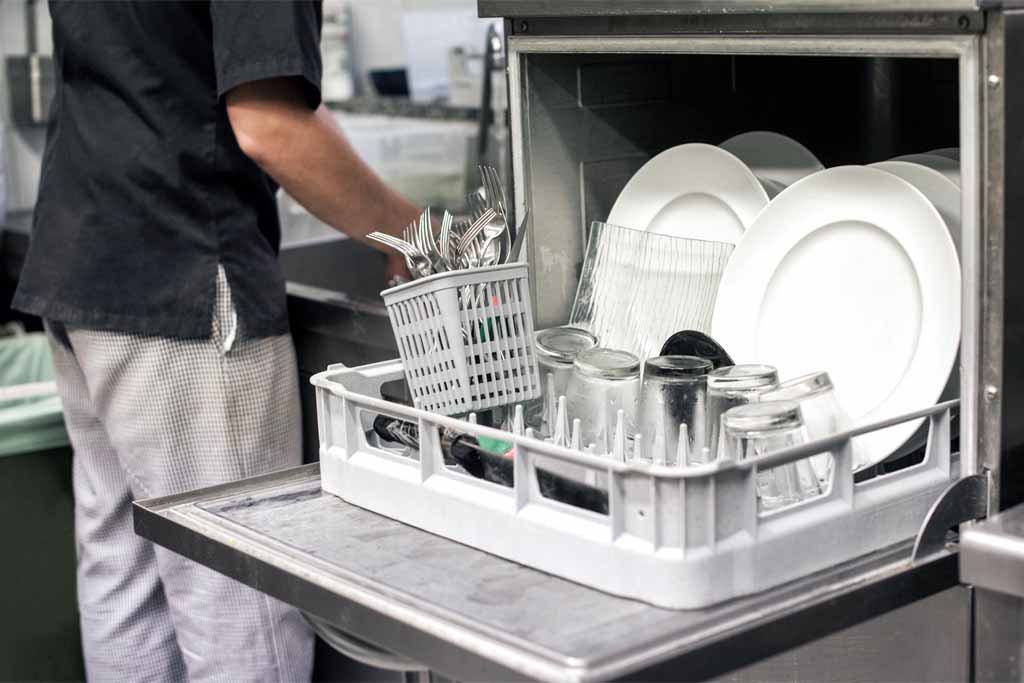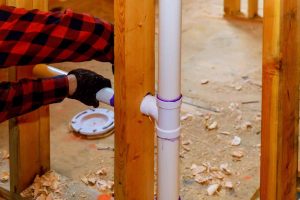The plumbing for a dishwasher is one of the easiest plumbing jobs to perform. The tips and tricks for plumbing dishwashers are simple, but you should still follow them to make sure everything goes when you install your new dishwasher.
If you’re like most people, you probably don’t think much about your dishwasher’s plumbing. However, if something goes wrong with the dishwasher’s plumbing, it can be a big problem.
That’s why it’s important to know the basics of dishwasher plumbing. In this article, we’ll give you some tips and tricks for keeping your dishwasher’s plumbing in good shape.
What Are The Tips And Tricks For Plumbing Dishwashers?
Plumbing for a dishwasher is an easy job, but it’s essential to know the right tools and parts. It would help if you had a snake wrench, pliers, and a couple of screwdrivers handy when you started this project.
You also must ensure enough space above the faucet, so your pipes are not interrupted as they connect to the water supply line.
Also, ensure enough room between your sink and countertop so that when you place your new dishwasher, it will fit appropriately without bumping into anything else in or around your kitchen. Once these things are taken care of, it’s time for installation.
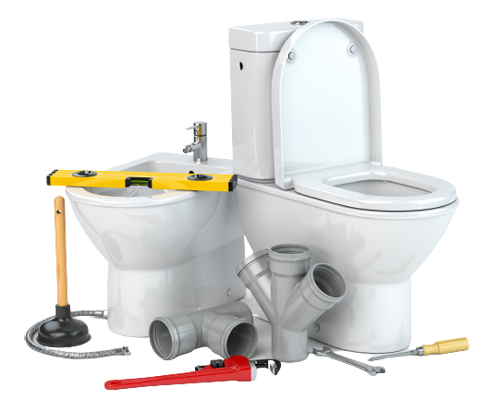
Are Your Drains Slow or Clogged?
Get a Drain Cleaning Today and Say Goodbye to Your Plumbing Woes! Get In Touch With Us And Experience Quality Service At Its Best!
You’ll start by unclamping the faucet and removing it. A wrench or a pair of pliers will work here. Next, use your snake wrench to loosen the nut holding your water supply line in place. Then disconnect this hose from your sink and set it aside.
So that you can make sure that everything is sealed correctly, check your dishwasher’s filter: If there is a filter inside of your dishwasher, make sure it is clean. Use warm water and soap to wash the filter, then rinse it well before placing it back in the dishwasher.
If you have a dishwasher it’s not draining, and you’re wondering why here are some tips to help you troubleshoot the problem:
- Check the filter. If your dishwasher doesn’t drain properly, the first thing to do is check the filter under the sink. It could be clogged with food particles or debris from when you last ran it, so cleaning that out should fix things for now.
- Check the drain hose. If you’re using a garbage disposal, turn it off before unplugging it from the sink. Then use pliers to remove any clogs or debris from inside your disposal by turning it upside down and shaking it out.
- Check your dishwasher for leaks. If your dishwasher isn’t draining correctly, check it for leaks. Check the hoses from the pump to ensure they aren’t clogged with food or debris, and make sure that there are no holes in them. If you see any spots, replace them immediately so that water doesn’t leak onto your floor.
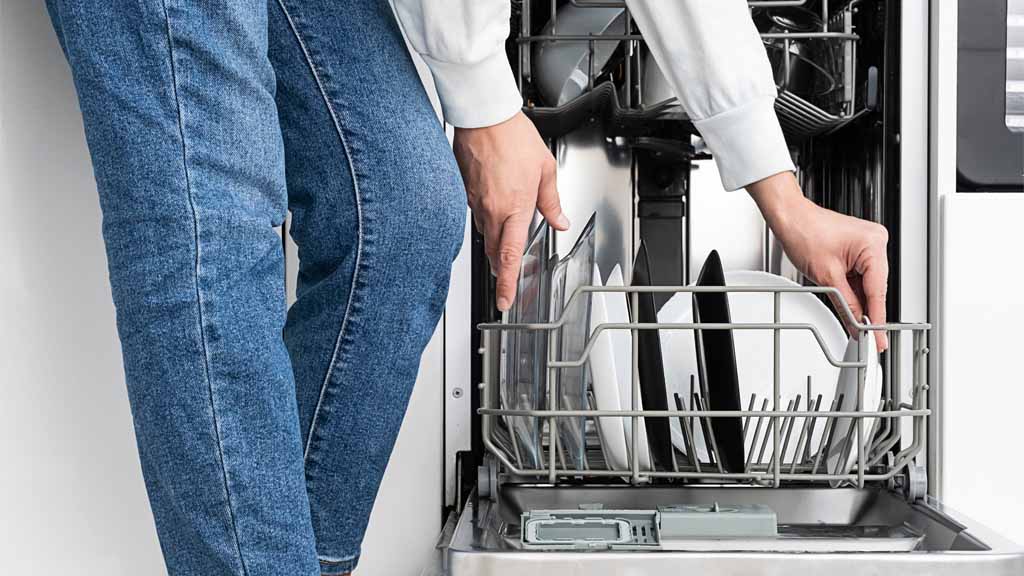
1. Dishwasher Is Installed Correctly
- Make sure the dishwasher is level.
- Make sure the dishwasher is plumbed correctly:
- The water source must be connected to the bottom of the dishwasher, not to a faucet.
- The drain source must be attached to the side or back of your sink rather than underneath your sink.
The vent should also be connected so you can use your dishwasher without worrying about flooding or other issues caused by duds or clogs in your plumbing lines.
You’ll now want to remove the drain plug from underneath your sink. It will allow water in the pipes to flow out of them as you install your dishwasher. Next, disconnect your dishwasher from its power source and remove all the packing materials around it.
You should also remove any hoses connected to the faucet or spray arms by unscrewing them with a screwdriver or wrench depending on what type they are.If your dishwasher does not have a filtration system or is not working correctly, you should consider installing one.
This will help keep your dishes clean and prevent water from dripping from the bottom when you run a cycle next. Place the dishwasher in its location. It would be best to mark the studs’ locations before doing so.
This will help ensure that your dishwasher is level and will stay upright while installing it. Once it’s in place, screw on the hose faucet or spray arms into the holes under your sink. Ensure they fit so water doesn’t leak out when you turn them on later.
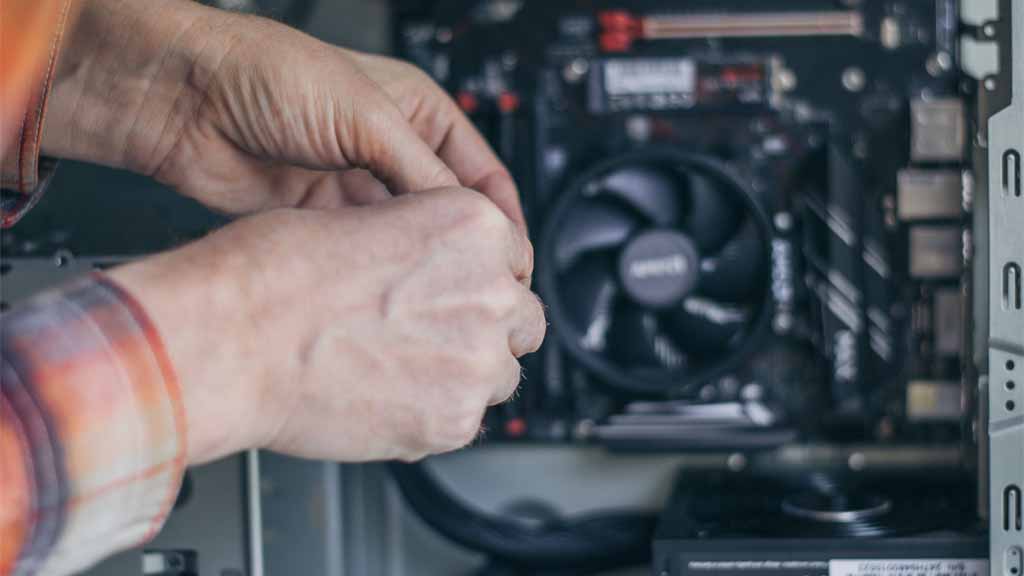
2. Dishwasher Is Correctly Connected
Tip is to ensure that plumbing for a dishwasher is correctly connected to the water supply. Ensure the dishwasher is connected to a cold water supply, a hot water supply, and a drain. The vent should also be connected so you can use your dishwasher without worrying about flooding or other issues caused by duds or clogs in your plumbing lines.
Next, remove the drain from your sink. This drain and you are ready to install your new dishwasher. If you have a dishwasher that is not level, call your local appliance repair service. The team will be able to fix the problem and ensure it is level.
The next step is to attach the drain hose to your dishwasher. You will want to do this by using a flexible coupling. These can be found at any hardware store in your area. Once attached, you will need to attach one end of the vent pipe to the drain hose’s other end.

Are Your Drains Slow or Clogged?
Get a Drain Cleaning Today and Say Goodbye to Your Plumbing Woes! Get In Touch With Us And Experience Quality Service At Its Best!
4. Dishwasher Is Adequately Ventilated
The tip is to ensure that plumbing for a dishwasher is adequately ventilated. This may sound like something you already know, but it’s essential! Dishwashers need to be vented to the outside.
Otherwise, they have nowhere for steam and fumes to go. If your dishwasher isn’t vented correctly, it can create a fire hazard or cause carbon monoxide buildup in your home—and that’s not something you want happening in your kitchen.
As part of regular maintenance, you should check the vents on your dishwasher every few months for proper performance. If there are any issues with ventilation or venting materials (such as rust or clogging), don’t hesitate to call a plumber as soon as possible.
Check for kinks in the supply lines:
- Remove any kinks or bends from your water supply line and drain hose.
- Check the pressure relief valve: If water leaks from the pressure relief valve, replace it by unscrewing it from underneath your sink.
- Check for leaks behind your dishwasher: If there is a leak on the back side of your dishwasher, tighten any loose connection screws with an Allen wrench you have a dishwasher that is not level, call your local appliance repair service.
They will be able to fix the problem and ensure it is level. If you have any questions about your dishwasher, contact our pros today for help.
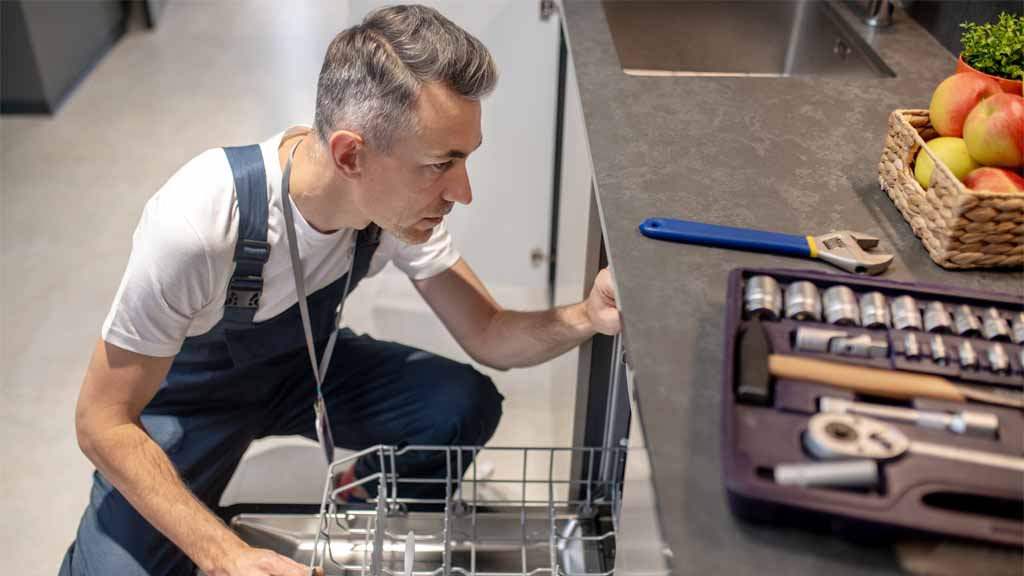
Check for leaks under your dishwasher: If there is a leak on the back side of your dishwasher, tighten any loose connection screws with an Allen wrench.
Check for kinks in the supply lines: Remove any kinks or bends from your water supply line and drain hose. Check the pressure relief valve: If water leaks from the pressure relief valve, replace it by unscrewing it from underneath your sink.
Connect your dishwasher to the water supply. You should be able to find a small hose at the bottom of your dishwasher that connects it to your faucet. If there isn’t one, you may need to purchase one before continuing with this step.
Use the plumber’s tape on all threaded connections and tighten them securely with a wrench or screwdriver. The vent pipe should be attached just beneath the sink so that air can escape as it is used.

Are Your Drains Slow or Clogged?
Get a Drain Cleaning Today and Say Goodbye to Your Plumbing Woes! Get In Touch With Us And Experience Quality Service At Its Best!
5.The Tip Is To Clean The Dishwasher Regularly
- Clean your dishwasher regularly.
- Use cleaning tablets and vinegar to help keep your dishwasher clean and smelling fresh.
- Clean the filter regularly to prevent limescale buildup, which can cause blockages.
- Check around the door seal for any food or grime that may be causing problems with water flow through the machine. If you have a leaky door seal, this will need replacing before you can use it again, as it may only function if fixed the first time! The tubes that come out of the machine can be found at the bottom right-hand side near the drain hose attachment point on the back wall of the unit (you’ll see one tube coming out from the left side while another comes out from the right side).
It’s vital to ensure that your vent is in good condition. Kitchen appliances made before this year were not required by law to be vented outside the house, and many people took advantage of this lack of regulation by simply opening windows when running the dishwasher.
If you install a dishwasher, ensure your plumbing is up to code. If you don’t know what to do with it, call a professional plumber for an estimate. A dishwasher is a convenient appliance that makes it easy to wash dishes, but many people need to learn how to install one.
If you want to learn more about installing dishwashers and how they work, keep reading. If you don’t know what to do with it, call a professional plumber for an estimate. Once you have decided where to put it, you can start looking for a dishwasher that fits your needs.
You will want to consider the size of the unit, whether or not it has an automatic cycle or manual controls if there is any water filtration system in place. How much noise does it make while running? Ensuring that your vent is in good condition is vital.
Kitchen appliances made before this year were not required by law to be vented outside the house, and many people took advantage of this lack of regulation by simply opening windows when running the dishwasher.
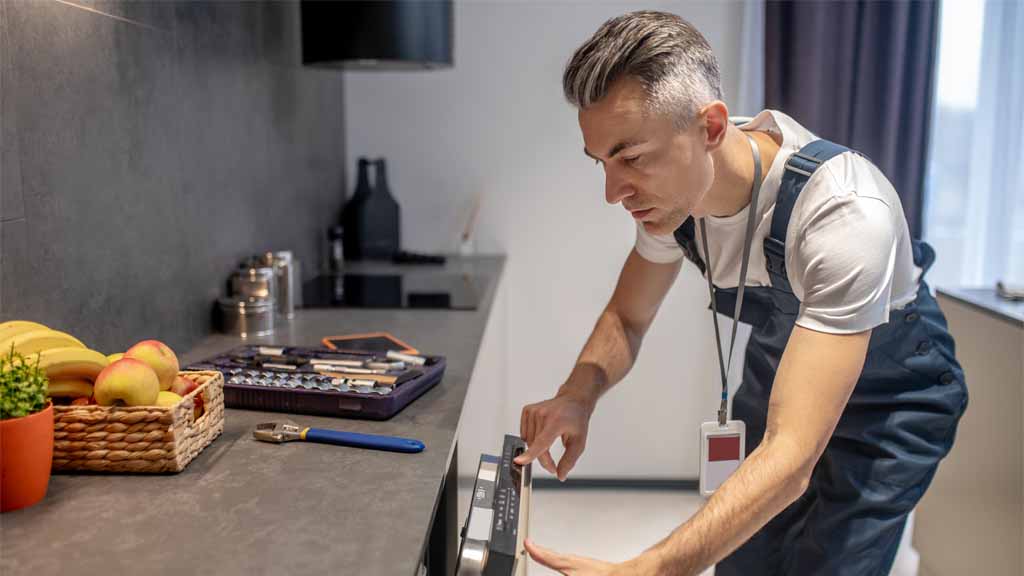
Why Do We Need A Plumber For Dishwashing?
When you hire plumb line services for a dishwasher, they will know how to connect it to the water supply and vent it properly. They will also be able to adjust any parts of your plumbing system that need adjusting, which is necessary for proper drainage or water flow.
Hiring a professional means that you won’t be confident about whether or not the job has been carried out correctly so that you don’t have any problems later on down the road.
If there is any food or water in this area, it must be cleaned out before use. If you are planning to install a new dishwasher, there are some things you should consider before making your purchase.
The first thing that you should do is decide where in your kitchen you want the dishwasher installed. You will also need to consider how much counter space is available and whether or not there are enough outlets nearby for plugging in appliances.
The drain hose connects to your home’s plumbing system so water can be pumped out of the dishwasher during rinsing and draining cycles. The drain hose should have an end cap on it so that no water leaks out when not in use.

Are Your Drains Slow or Clogged?
Get a Drain Cleaning Today and Say Goodbye to Your Plumbing Woes! Get In Touch With Us And Experience Quality Service At Its Best!
Check for leaks behind your dishwasher: If there is a leak on the back side of your dishwasher, tighten any loose connection screws with an Allen wrench.
Check for kinks in the supply lines: Remove any kinks or bends from your water supply line and drain hose.
Check the pressure relief valve: If water leaks from the pressure relief valve, replace it by unscrewing it from underneath your sink.
Authorized Install
If you are plumbing for a dishwasher, ensure it is installed according to current plumbing codes. You can find these codes online or at your local library or city hall.
A professional plumber will know how to safely and correctly install a dishwasher, so if you need help, call one for an estimate.
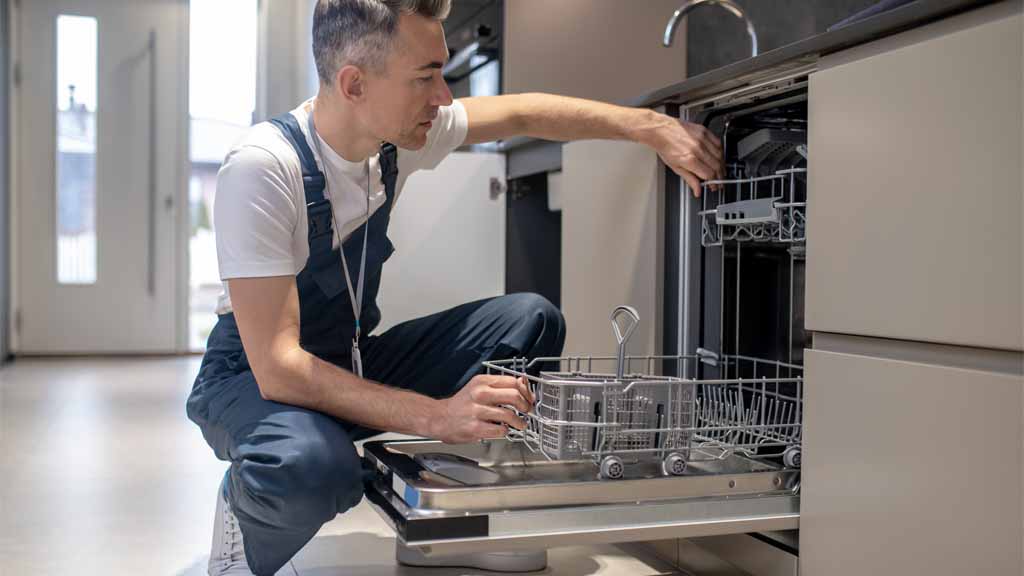
6. Dishwashers Easy Plumbing Job
You must install the dishwasher correctly so that it operates at maximum efficiency.
- Plumbing for a dishwasher is simple. Ensure that your plumbing setup is done correctly, and ensure there are no leaks or drips that can cause damage to your kitchen flooring.
Many different dishwasher models are available today, and some come with installation kits. If you have a model that doesn’t include a kit, you must purchase one separately.
- A dishwasher installation kit includes pipes, hoses, and fittings that enable your appliance to connect to the plumbing system in your home. You may also need additional parts depending on your specific situation.
- Dishwashers come in various shapes and sizes, but they all have the same essential elements that need to be connected. You’ll need to click the plumbing lines from your sink to supply water for rinsing and draining.
You’ll also need to connect it to a source of electricity so that you can power the motor. The water supply line connects to your home’s plumbing system so the plumbing for a dishwasher can be filled and rinsed with water.
The water supply line should have an end cap so that no water leaks out when not in use. If you install a dishwasher, ensure your plumbing is up to code. It should be long enough to reach from the back of your dishwasher to where you want it to empty.
If there still needs to be a drain available, you may need to purchase and install one before installing your dishwasher. You’ll also need an adjustable wrench or pliers to tighten any connectors that may come loose over time.
Conclusion
The following tips and tricks should help when plumbing a dishwasher: ensure all connections are secure and properly fitted, use Teflon tape on all threaded connections, and be careful not to over-tighten connections. With a little care and attention, plumbing a dishwasher should be a straightforward process.

